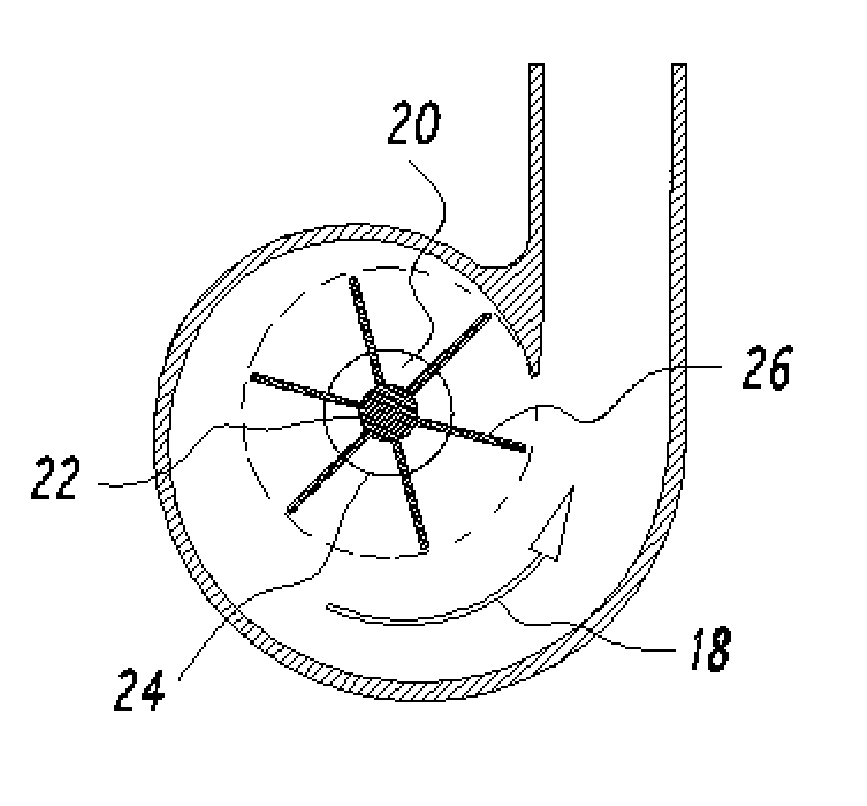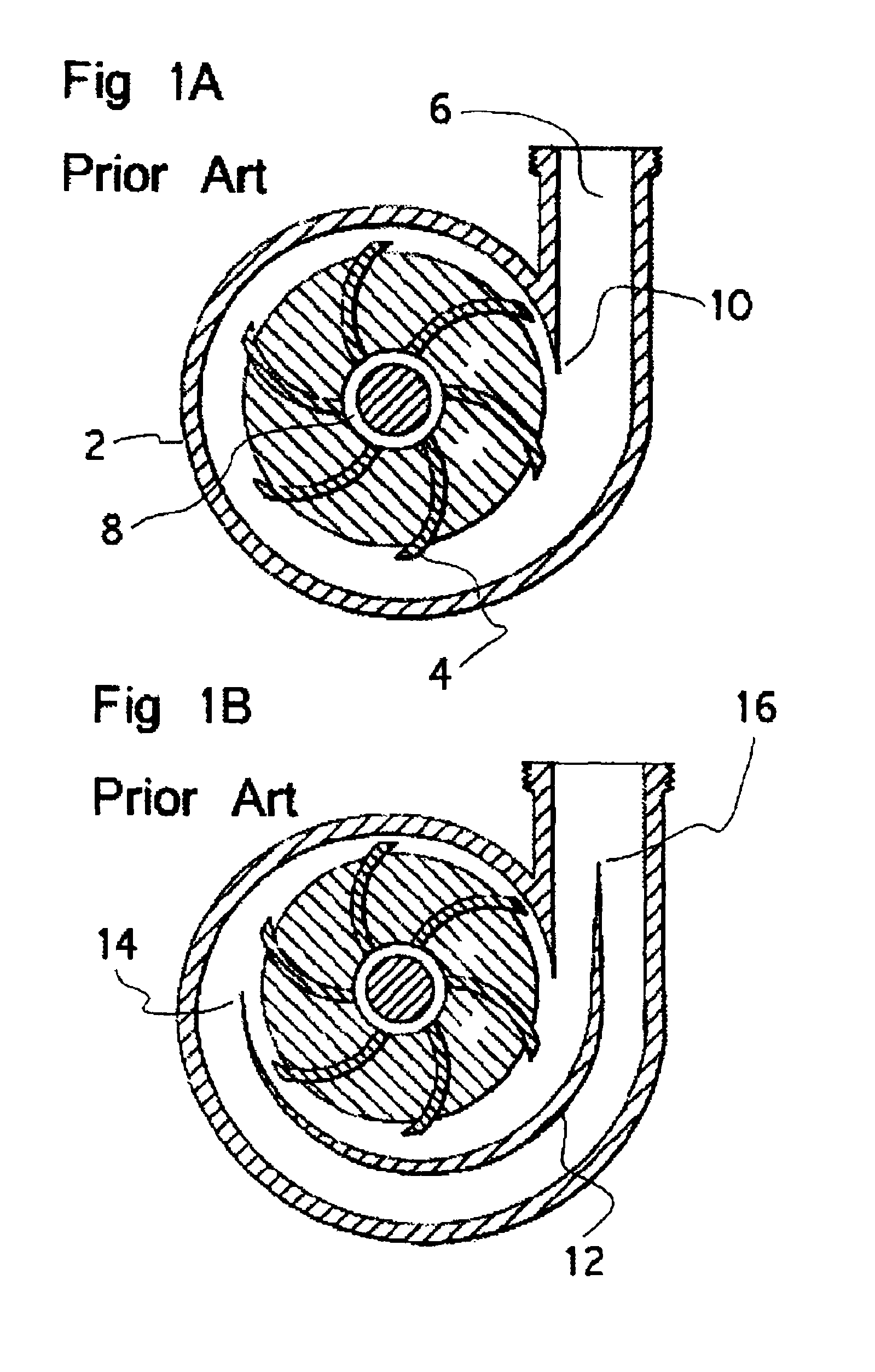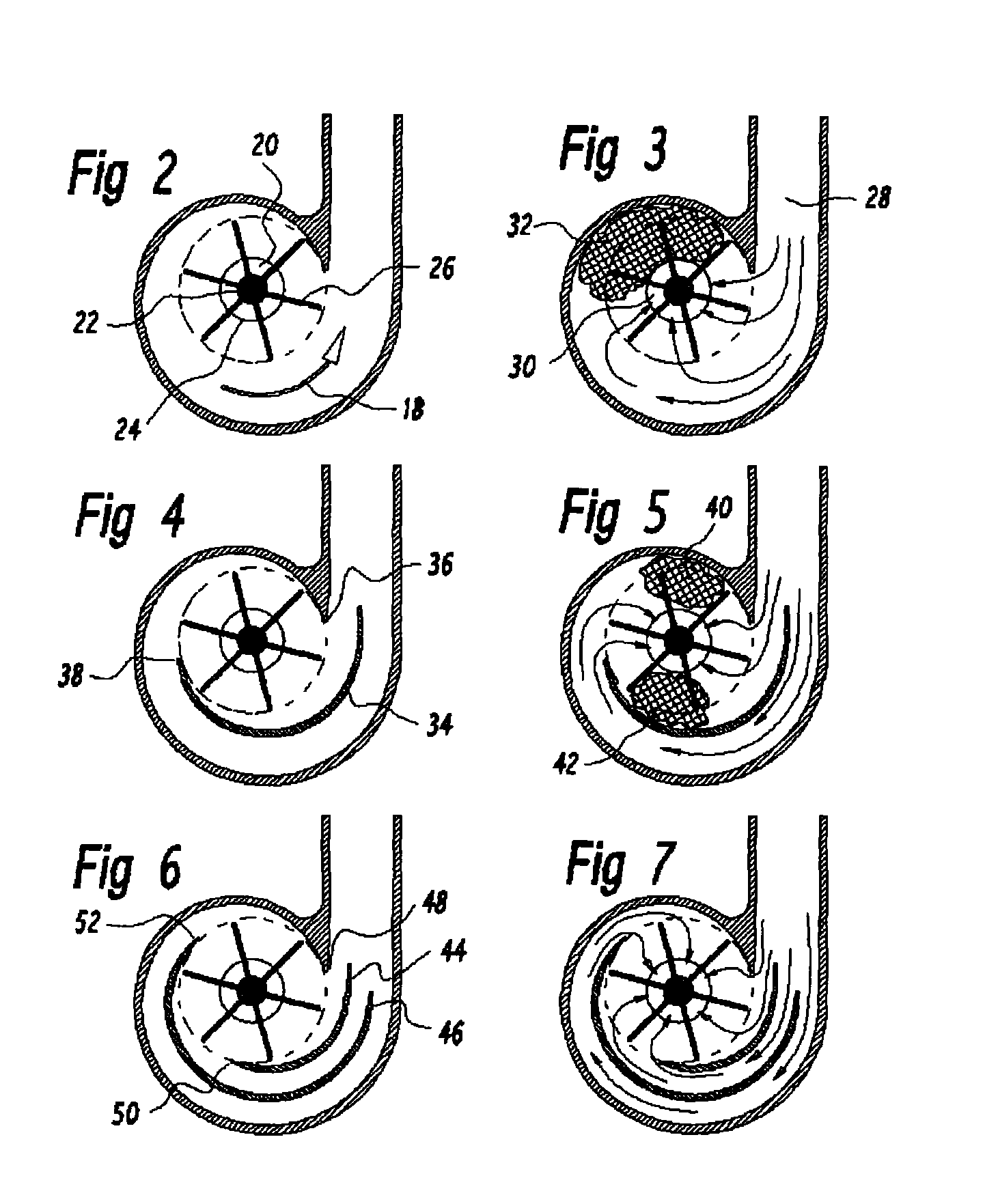Centrifugal blood pumps with reverse flow washout
a centrifugal blood pump and reverse flow technology, which is applied in the direction of prosthesis, liquid fuel engine, therapy, etc., can solve the problems of pump stoppage, overloading the ability of the patient's natural heart, and external heart assist system components exposed to all sorts of accidents
- Summary
- Abstract
- Description
- Claims
- Application Information
AI Technical Summary
Benefits of technology
Problems solved by technology
Method used
Image
Examples
Embodiment Construction
[0033]FIG. 1A shows the basic prior art structure of a centrifugal pump having a spiral casing 2, with an impeller 4, and volute that is comprised of the spiraling casing and tangential outflow tube 6. The flow enters centrally through an inflow opening 8, and exits tangentially through the outflow tube 6. As seen in FIG. 1A the impeller rotates counterclockwise, and it is seen that the fluid forced to the periphery of the casing by the action of the impeller proceeds along a channel of gradually enlarging cross-sectional area from the position known as the cutwater 10, to the outflow tube. In the prior art double volute centrifugal pump structure shown in FIG. 1B, a partition known as a splitter blade 12, divides the spiraling flow channel into two portions, each occupying approximately 180°. In the double volute design there are two cutwater structures, 14, 16, such that two flow channels are formed that join at the outflow tube.
[0034]In the single volute design flow proceeds unif...
PUM
 Login to View More
Login to View More Abstract
Description
Claims
Application Information
 Login to View More
Login to View More - R&D
- Intellectual Property
- Life Sciences
- Materials
- Tech Scout
- Unparalleled Data Quality
- Higher Quality Content
- 60% Fewer Hallucinations
Browse by: Latest US Patents, China's latest patents, Technical Efficacy Thesaurus, Application Domain, Technology Topic, Popular Technical Reports.
© 2025 PatSnap. All rights reserved.Legal|Privacy policy|Modern Slavery Act Transparency Statement|Sitemap|About US| Contact US: help@patsnap.com



